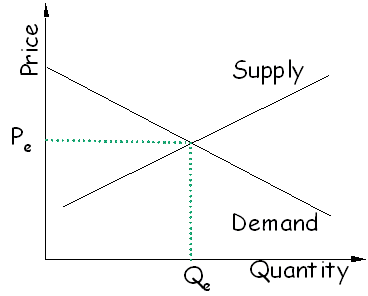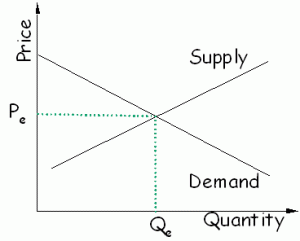- Engel’s Law and Engel Curves
- As already discussed, the family budget data (or cross section data) gives a detailed account of the family budgets showing expenditure on main items of family consumption together with family structure and composition, family income and various other social, economic and demographic characteristics. A German statistician Ernst Engel (1821-1876), after a detailed and systematic study of the family budgets (expenditures) of families, enunciated in 1895 the law, known as Engel’s law as follows:
“As the income grows, the share of income spent on food decreases”. In other words, “The proportion of expenditure on food decreases as household expenditure increases”.
- Hence, as income increase the expenditure in different items have changing proportions, and the proportions devoted to urgent needs while for luxuries and semi-luxuries they increase.
- The graphic representation of the basic relationship between household income and its expenditure on a particular item of consumption is known as Engel’s curve.
- In general, as an approximation the demand for any commodity among a class of people may be regarded as depending on the price of the commodity and the income of the people, the two factors not necessarily summing up. Thus
d=f(u,p)
Where‘d’ is the demand for a commodity, ‘p’ is its price and ‘u’ is the national income.
- Engel classified goods as superior and inferior and tried to study the variation in the consumption patterns of different types of goods as a consequence of the variation in the income level of the people.
- Regarding demand function ‘d’ as a two parameter function of price (p) and income (u), it can be represented graphically by a certain surface ‘D’ in the three-dimensional space, taking the three variables ‘d’, ’p’ and ‘u’ along three rectangular coordinate axes ‘Od’, ‘Op’, ‘Ou’ and ‘O’ being the origin of the system of coordinates.
- In particular, if we regard price as fixed constant, ‘p=p*’, (say), then the demand function
d=f(u,p) becomes,
d=f(p*,u)=f1(u)
i.e., ‘d’ becomes a single parameter function of ‘u’. hence, for ‘p’= constant, the graph of the demand function is given by the curve of intersection of the surfaces ‘D’ with planes perpendicular to the axis Op. these curves are called Engel’s curves for constant prices.
- Similarly, regarding income as constant viz., ‘u=u*’, (say), so that the demand function
d=f(u,p) becomes,
d=f(p,u*)=f2(p)
i.e., ‘d’ becomes a function of the single parameter ‘p’ (price), its grapj being given by cutting the surface ‘D’ with planes perpendicular to the axis ‘Ou’. These are called Engel’s curves for constant income.
- There are two methods of drawing Engel’s curves for studying the dependence of demand (d) on income (u) at constant price.
- Method 1. It consists in comparing the budgets of the same family during different period of time and studying their consumption pattern on different items of consumption as a consequence of variation in income. The obvious drawback of this method is that the assumption ‘p=constant=(p*)’ during the periods under consideration is not generally true. Hence, this method can be recommended only in the situation when the prices of given commodity and the substitution and complementary goods remain more or less constant during the given period of investigation.
- Method 2. This method consists of simultaneous study of the budgets of different families with different income levels. Let ‘di’ be the demand for a commodity at income level ui (i=1, 2, ….., n). The Engel’s curve ‘d=f(p*,u)=f2(u); p=constant’, is then obtained by using the principle of least squares.
- ii. Method 2 assumes that the consumption pattern of families at different levels of income is same, an assumption which is far from reality. The requirement of families in different income groups regarding the items of consumption and their quantities vary considerably, the difference being quite sharp between the poor and the rich families, this drawback may be overcome by stratifying the given population into relatively homogeneous groups (strata) of more or less the same way of life, like low income or middle income group, industrial or agricultural workers, farmers etc., and studying each of these groups separately.
- iii. Stratification into groups need to be done more deeply because even among the people of the same group, as a consequence of variation in incomes, different families will react differently to the consumptions of different items depending on their age structure (old and young people will react differently to the same commodity), sex, region and religion (community), family size (the families with no child at all, or 1 or 2children or 3 or more children will react differently to the same commodity), and so on. Consequently, for an ideal study of Engel curves, in addition to statistical information sociological factors should also be taken into account.
Click here for government certification in Statistics and Quality





5 Comments. Leave new
Good one!
Very elaborate! Good effort.
Good effort..!
Very well explained..
nice…